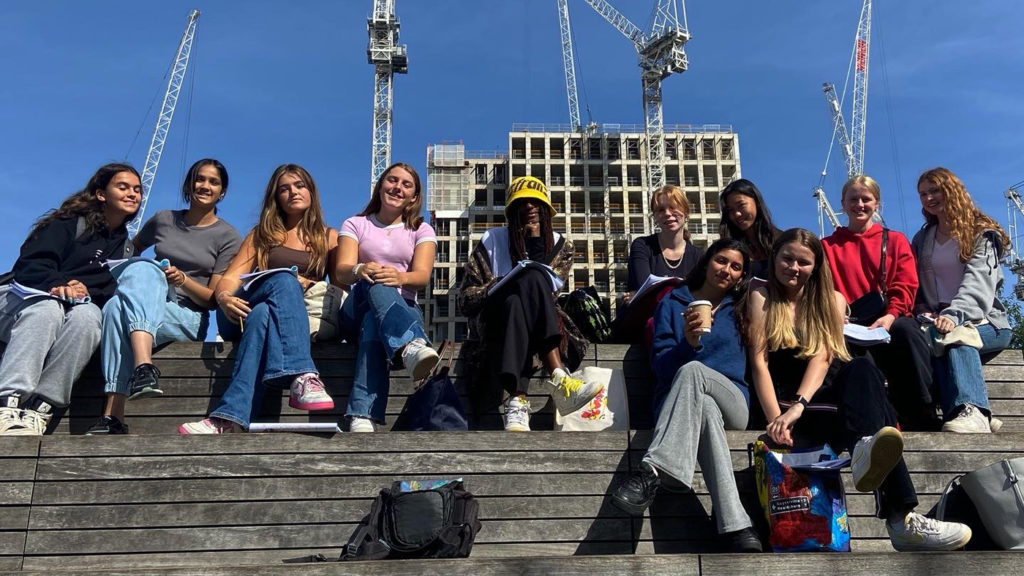UVI Visit London for Geography Field Trip
7 October 2021 - Academic

Due to Covid restrictions last year, pupils were unable to go on trips for both their academic lessons and activities. Last week, A level geographers were the first group to venture out on their much-awaited field trip to London. Below, Alice gives her account of the day.
At the beginning of term, we were finally able to make the journey across London for our A level field trip. We were unable to do this last year due to the Covid-19 restrictions, but despite the delay, the trip still retained its insightful and cultural meaning. We were able to further our learning around regional inequality, as well as the significance of the different players involved in the place-making process.
Starting the day in Stratford Town centre, we conducted our own primary data collection through interviewing members of this tight-knit community. This provided us with a first-hand account of life in Stratford, and we were especially surprised at the large migrant population that gives Newham its ethnically diverse characteristics. We then walked to the Carpenter’s estate and began an environmental survey of the housing that we had studied in class. Even though we had previously learnt about the government investment of £1 billion into this estate, after talking to a member of the local council, we were able to gain a new perspective of how the residents feel about their homes and livelihood being permanently changed.
The Olympic Park provided us with an example of the benefits connected to brownfield site regeneration. After learning about the affordability of the services that the Olympic Park provided, as well as the sustainability of the infrastructure built, it was evident that the London 2012 Olympic Games has had lasting positive effects within the community of Newham. After lunch, we headed to Hackney Wick, an area of urban regeneration with many informal representations of place, mainly artistic graffiti. We learnt about the advantages of organic placemaking, and how Hackney Wick has become a prevalent location for aspiring artists to open galleries and workspaces in recent years. In order to understand the full impact of the Olympic Games, we then visited the East Village, a region whereby different players transformed Athlete accommodation into resident housing after the Games. It was incredible to witness how private players can generate inwards investment into a previously poor area, turning it into a profitable real estate hotspot. Finally, we ended our day at Westfield in Stratford where we were taught about the influential nature of retail regeneration, and also managed to do some shopping ourselves!
Overall, the day was a complete success. We were all extremely grateful to have been given the opportunity to visit the regions that we have been studying in our lessons, and to further understand the multifaceted approach surrounding place-making.
Alice
UVI